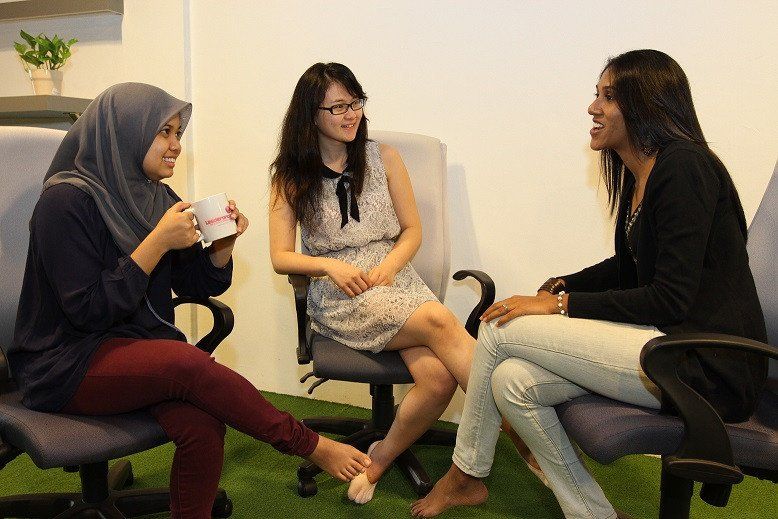Cohesion In Diversity: 3 Key Principles Of Managing Differences

What does it mean to be Malaysian? More importantly, what does it mean to be a Malaysian woman? I can tell you for sure that it has trained my mind well enough to give me conversation topics when I immersed myself in different cultures during my time studying abroad.
It also means I have had a significant dilemma answering questions from foreigners about my country because we are so diverse, so different, yet so tolerant (for better or worse).
I recall a conversation I had with a British friend and it was a simple question: “How is Malaysia’s political scene?”
I found myself tongue-tied in trying to explain that, while we have an interesting political scene, the people are really nice and the country is great too.
All this talk of diversity and cohesion, especially following the 52nd Malaysia Day, got me thinking: What has my journey as a Malaysian taught me as a person, as a woman, and as a leader in the workplace?
Taking on my team-lead role a year back has taught me significantly about integration, cohesion, alignment and various other descriptors of “bringing people together”. It helps that I was blessed with a team formed of diverse age, background, race, experience, and nationality – this reflects the kind of integration that needs to be done.
As expected of any team, collaborations need to result in high performance. As I learnt (and am still learning) certain principles are helpful when it comes to integrating a team at work:
Legacies matter
No change comes without discomfort; no discomfort comes with painful issues. I do not get to choose the life journey of those who have come to be part of my team, so rather than fighting and denying it, the sensible thing I learnt was to listen to these legacies.
Having honest conversations about it reduces defensiveness that can come with new change.
Differences are meaningful
We generally focus on bringing out similarities when it comes to creating cohesiveness so that people have a common goal. While highlighting common experiences help in terms of alignment, for sustainable collaboration, it is meaningful to use this similarity platform to help each other realise their differences so that people feel that they can uniquely contribute to the same goal.
If we downplay these differences, we may inevitably lose the leverage of the different strengths people can bring to the table.
Cohesion is a process
It is easy to think that cohesion is an end goal where we reach a point that we are integrated. Job done, right?
In a VUCA (volatile, uncertain, complex and ambiguous) environment, especially when clarity is short-lived, integration and disintegration is a cycle.
Just as we have had many years in Malaysia of coming together and moving apart, organisational teams go through this same ebb and flow.
Understanding cohesion as a process reminds us to intentionally build a collaborative spirit, because this glue can weaken when we are not careful.
As a woman learning to lead in the workplace, I find three Es necessary in managing the principles mentioned above, and generally in the context of enabling integration and cohesion.
1. Empathy
As a generalising statement, women seem to be able to empathise better, and I come from the camp that sees this as a consequence of social learning as well as our biological advantage. Given that we have this advantage, why not use it?
One of the key characteristics of a great leader is their ability to be present and to take the view of another person. This does not necessarily mean blind agreement, but the leader intentionally acknowledges what the other person is going through and affirming that it is OK, without assigning judgment.
As I mentioned in discussing legacies, showing empathy removes defensiveness and allows openness to take place.
If you remember playing the Tetris game, space is needed for the blocks to fit in perfectly. Empathy is the key to enabling an opening between both parties to integrate a new block into existing structures.
2. Experimenting
Often, women are brought up in an environment – particularly in our Asian collectivistic culture – to be safe, to stay behind and to not stand up. This social learning has led to women shying away from exposure, especially from areas we are not comfortable in.
In an effort to integrate a team at work, it is a must to be able to step out of the comfort zone and meet others.
This might mean we are exposed to unfortunate value judgment of, “It’s because she’s a woman, she’s too complicated” but truly, what matters more is our self-judgment.
Experimentation will always come with successes and failures, where certain methods work for team cohesion, others fail miserably. I know there are times where I’ve tried an idea which I thought was amazing, but was met with confusion in the team.
Nevertheless, they appreciated my spirit of experimentation, because it shows I am willing to try new ideas for the benefit of my team.
3. Execution
The good side of the social learning I have mentioned above is that women are more deliberative. Sure, that has stopped us from taking bigger steps immediately but, in line with empathy and experimentation, it can mean better decisions for people in the long-term.
Particularly because there is always an underlying subconscious stigma about women’s capabilities to lead, it is paramount that we do what we say and say what we do. All the understanding or awareness that comes with empathy, or the new ideas we are willing to experiment with, will not matter if we do not actually do it, and do it with integrity.
This enables cohesion and collaboration to be sustainable because there is actual execution, which has been thought over. We cannot be “NATO” or No Action, Talk Only (which scientific studies claim women having more word quota than men per day).
Concluding thoughts
Ultimately, I am a firm believer that these principles and the way we manage principles are relevant across gender, age and other factors of diversity.
Just as Malaysia is a constant search for the right equilibrium, her ability to withstand the push-and-pull forces, while still maintaining a sense of hopefulness, could be one of our greatest examples to never give up in building our team’s cohesion.
Business
Tags: Be A Leader





